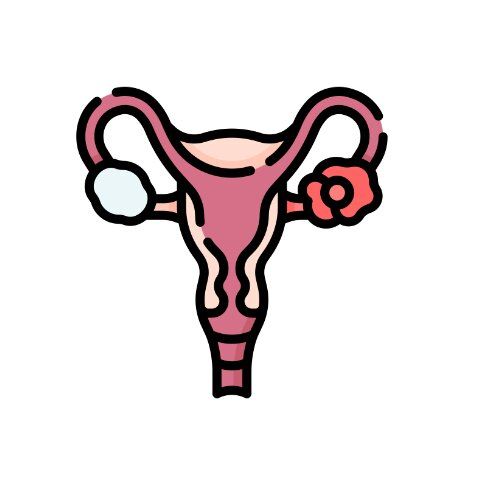What Causes It?
Age - Risk increases with age, particularly after menopause, with most cases occurring in women over 50.
Family history - Having close relatives (mother, sister, daughter) with ovarian, breast, or colorectal cancer increases risk.
Genetic mutations - Inherited changes in BRCA1, BRCA2, and genes associated with Lynch syndrome significantly increase risk.
Reproductive history - Never having been pregnant, starting menstruation early, or experiencing menopause late increases lifetime exposure to estrogen.
Hormone replacement therapy - Particularly estrogen-only formulations used for extended periods after menopause.
Endometriosis - This condition has been associated with certain types of ovarian cancer.
Obesity - Higher body mass index increases risk, especially in women who have never used hormone replacement therapy.
Fertility treatments - Some studies suggest possible links between certain fertility drugs and ovarian cancer, though research is ongoing.
Smoking - Associated specifically with an increased risk of mucinous ovarian cancer.
Talcum powder - Some studies suggest a possible link between talc use in the genital area and ovarian cancer, though evidence remains controversial.
Radiation therapy - Previous radiation treatment to the pelvic area may slightly increase risk.
Polycystic ovary syndrome - May be associated with a higher risk, particularly in younger women.
Signs & Symptoms
Abdominal bloating or swelling - Persistent and often one of the earliest signs.
Pelvic or abdominal pain - May be vague discomfort or more severe pain.
Difficulty eating or feeling full quickly - Even after small meals.
Urinary symptoms - Urgency or frequency beyond what's normal for you.
Fatigue - Persistent and unexplained tiredness.
Back pain - Particularly in the lower back.
Pain during intercourse - New onset of discomfort during sexual activity.
Changes in bowel habits - Constipation or diarrhea that persists.
Menstrual irregularities - Changes in period patterns in premenopausal women.
Unexplained weight loss - Losing weight without trying.
Abdominal distension - Due to fluid accumulation (ascites) in advanced stages.
Shortness of breath - In later stages, possibly due to fluid around the lungs or cancer spread.
Note: These symptoms are often attributed to more common conditions, leading to delayed diagnosis. Persistent symptoms, especially several occurring together, warrant medical evaluation.
